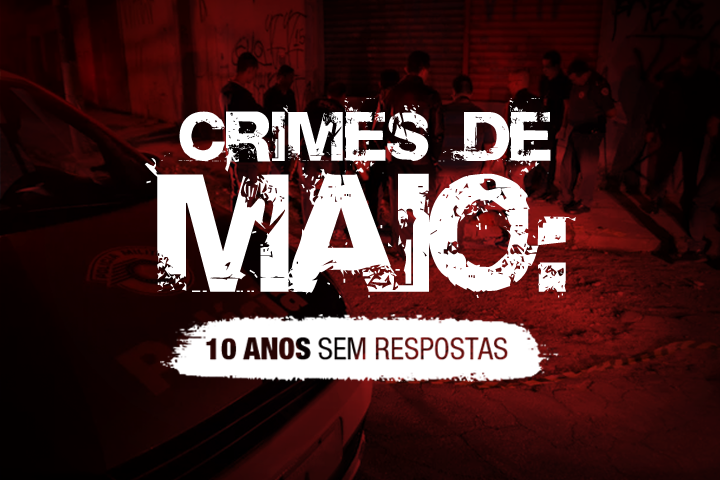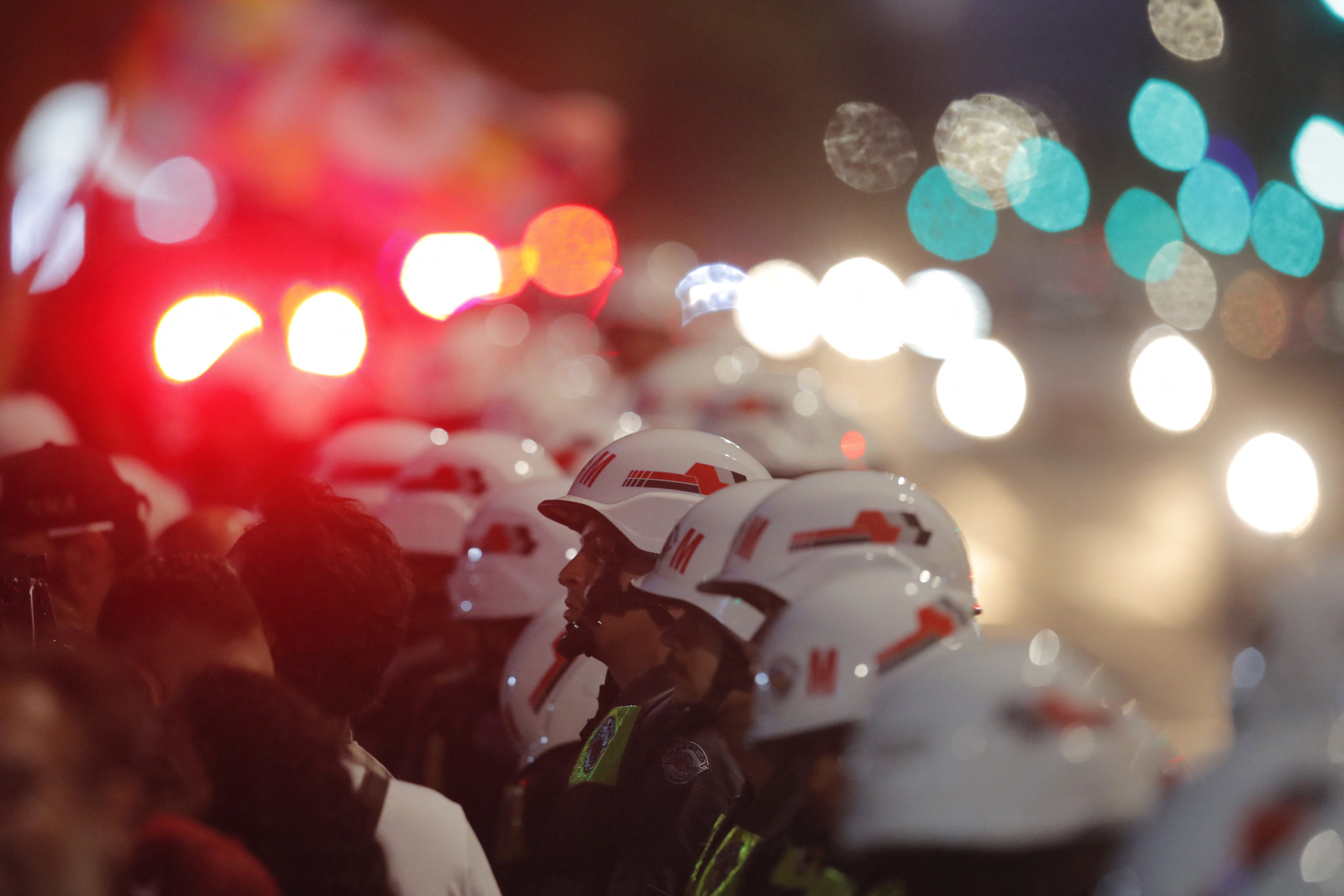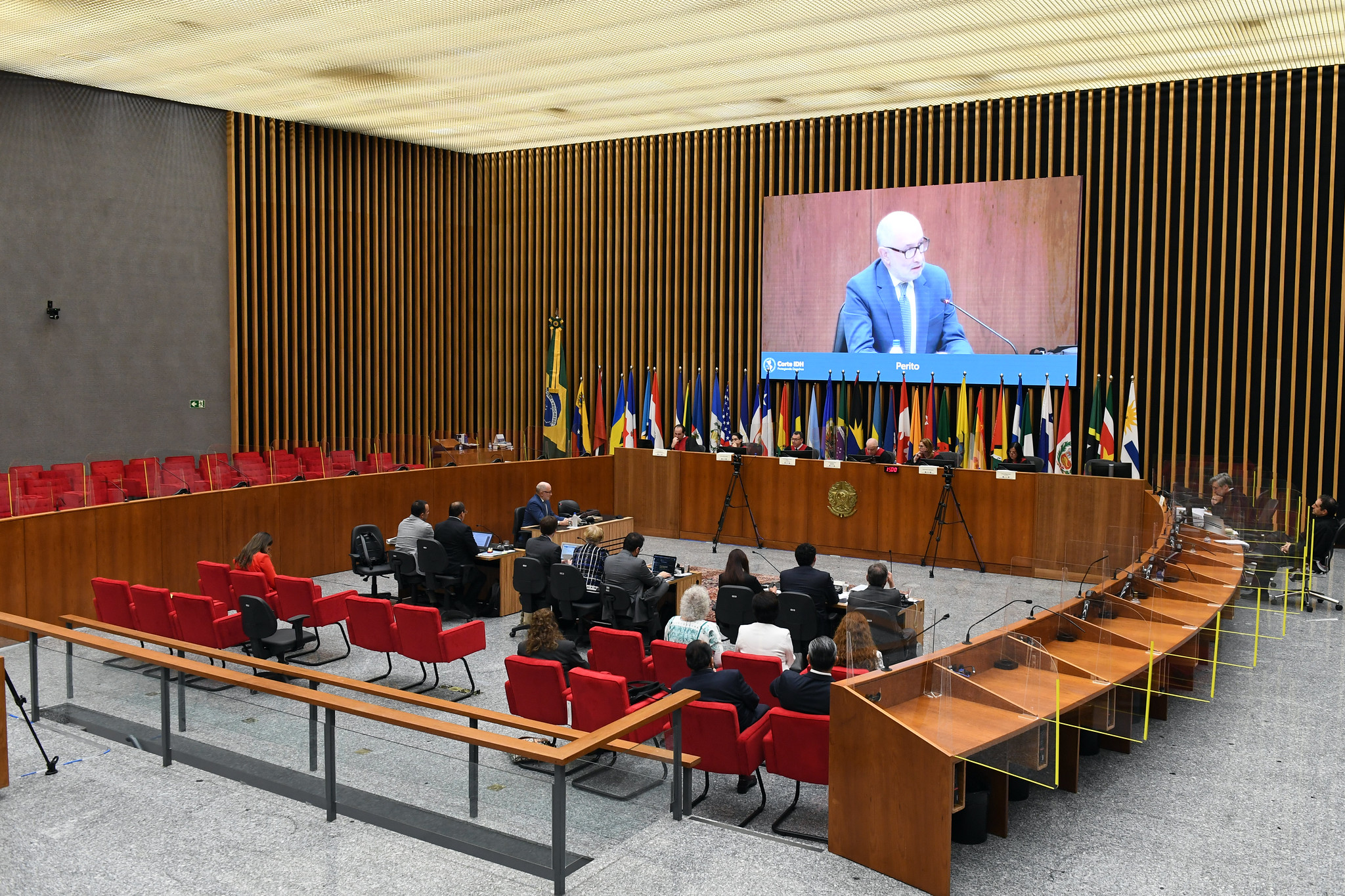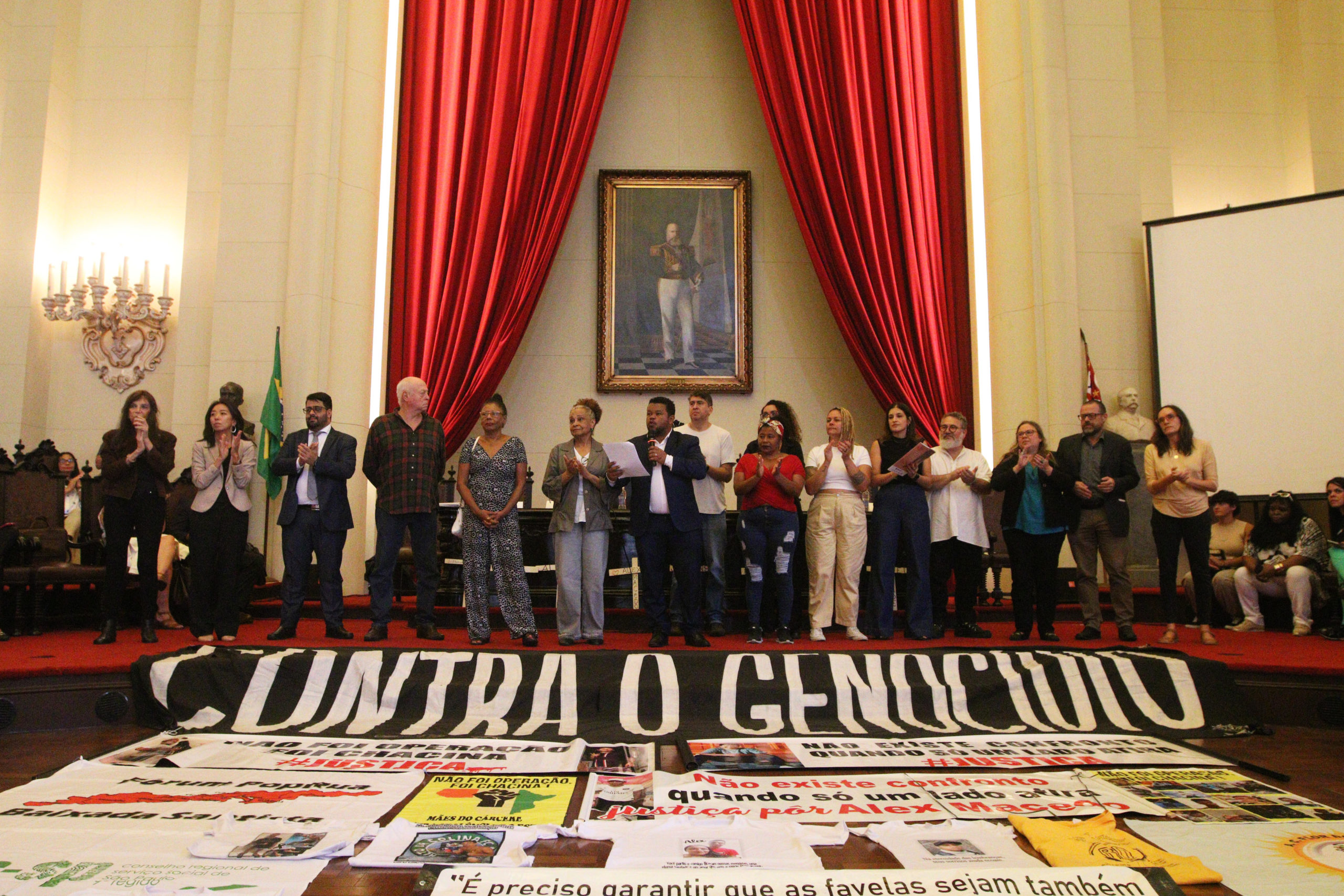A bloodstained chapter in the history of São Paulo remains unresolved. Ten years after the so-called Crimes of May, there has been a shortage of answers but an excess of negligence on the part of the state authorities and indignation and pain by the families of the hundreds of victims.
Read below about the context in which the Crimes of May took place, the data compiled by leading research institutions that raise serious suspicions of police involvement in the massacres and what the families of the victims and civil society have been doing since then. Also learn about the direct legacy of this bloody episode and what steps could be taken to prevent a repeat of these types of killings.
Context
 The alleged trigger of the conflict between the São Paulo criminal gang known as the PCC (First Capital Command) and the state police was the transfer of 765 prisoners – including gang leaders – to a maximum security prison in the inland municipality of Presidente Venceslau.
The alleged trigger of the conflict between the São Paulo criminal gang known as the PCC (First Capital Command) and the state police was the transfer of 765 prisoners – including gang leaders – to a maximum security prison in the inland municipality of Presidente Venceslau.
In a public show of force, the PCC coordinated a series of prison riots and attacks on police facilities and public buildings. For five days, nearly 300 attacks were staged. Never confirmed rumors of a curfew caused schools and stores to shut their doors across the capital. The streets were deserted. The city came to a standstill.
 Two days after the first attacks, the news shifted focus. Civilians started being killed by the dozen in what appeared to be summary executions – most were shot in the back or in the head by masked groups.
Two days after the first attacks, the news shifted focus. Civilians started being killed by the dozen in what appeared to be summary executions – most were shot in the back or in the head by masked groups.
Between May 12 and 21, 2006, a total of 505 civilians were killed and 97 were wounded in shootings in the state of São Paulo. The number of killings was almost four times higher than usual for the period, compared to the previous year. Most of the victims were men up to 35 years of age with no criminal record and residents of neighborhoods in the poor urban outskirts. Over the course of these 10 days, 59 government agents were killed and another 13 were injured.
The clandestine arm of the State
According to the study “Analysis of the impacts of the PCC attacks in São Paulo in May of 2006”, conducted by the researcher Ignácio Cano, of LAV-UERJ (Laboratory for the Analysis of Violence, of Rio de Janeiro State University) at the request of Conectas, there is strong evidence that the civilian killings were retaliation by police for the initial attacks.
“One of the main findings brought to light by this study is the fact that the series of attacks against the police was concentrated primarily in the first two days. On the other days, we can observe a reaction by the police and masked death squads,” explained Rafael Custódio, coordinator of the Justice program at Conectas. “Several other signs also presented in this study indicate a strong possibility that these death squads were formed by police officers, who were most likely seeking revenge for their lost colleagues.”
>>Read the report by Conectas and LAV-UERJ
The theory of a coordinated and clandestine action by the police as revenge and as a show of force is corroborated by a number of statements from survivors and witnesses, including one police officer who turned himself in. There are also signs of omissions on the part of the authorities, in an attempt to erase evidence of the real culprits and to incriminate the victims. One military police officer even wrote on his Orkut profile: “Now we’re cleared to kill, the real police is back”.
The abundance of evidence was ignored by the São Paulo Public Prosecutor’s Office and the Civil Police: of the 31 crimes committed against civilians investigated by the Civil Police Homicide Department, only four (12.9%) were fully or partially solved. In contrast, 12 (85.7%) of the 14 investigated cases of killings of police officers were fully or partially solved, according to a study by Justiça Global and IHRC (International Human Rights Clinic of Harvard University). Just three military police officers have been found guilty of executing civilians. Two have been convicted, one of them to secure a facility. But none of them are in prison.
>> Read the study by Justiça Global and IHRC
The study reveals that various actions by the police, such as tampering with the crime scenes, providing false assistance and even threatening witnesses made it difficult to clarify the circumstances surrounding the murders. Similarly, the investigations ignored basic procedures, such as hearing the witnesses cited in the police reports and linking identical murders that took place within short spaces of time.
The Parque Bristol case
The young men Edivaldo, Eduardo, Israel, Fernando and Fábio feature on the long list of victims of the attacks of 2006. Aged 21 to 25, they were all shot by a group of masked men on May 14, 2006, in front of their house in Parque Bristol, a neighborhood in the far south of São Paulo. On November 2008, without the perpetrators having been identified, the case was shelved at the request of the São Paulo Public Prosecutor’s Office.
Since an appeal was no longer possible, Conectas and the families of the victims denounced the case to the IACHR (Inter-American Commission on Human Rights of the Organization of American States) in May 2009, alleging that the Brazilian State was in violation of the American Convention on Human Rights, which was ratified by the country in 1992. The Commission has yet to decide on the admissibility of the complaint.
In the same year, a request was filed with the Office of the Attorney General to federalize the case, which in practice would lead to a reopening of the investigations by the Federal Police and the Federal Prosecutor’s Office and holding a trial in federal courts.
Last Monday, May 9, seven years after the request was originally filed, the Office of the Attorney General finally decided to pursue the case and asked the Superior Court of Justice to investigate the Parque Bristol massacre in the federal sphere. It is not known when the case will be examined by the court.

Legacy of impunity
“If the current model of public security is considered by experts, social movements and civil society organizations a nefarious legacy of the military dictatorship, then we can say that the alarming escalation in the number of killings by the police in São Paulo is a direct legacy of the Crimes of May, since the impunity of the officers gives ‘carte blanche’ for civilians to be killed at random,” said Jessica Carvalho Morris, executive director of Conectas.
According to quarterly statistics released by the São Paulo Public Security Department – that do not include so-called ‘suspicious deaths’ – the civil and military police in the state were responsible for 4,892 killings between 2007 and 2015 – an average of 1.5 per day. In the first quarters of both 2015 and 2016, there were 201 such killings, the highest number for a first quarter since 2003.
“Institutional violence is generally only exposed in the press when there are extreme cases of violence, such as the series of massacres committed in the Crimes of May. Emboldened by the absence of any political will to investigate this type of crime, death squads continue to operate frequently in São Paulo and there are strong signs of involvement by public security agents in these crimes,” said Morris.
According to data obtained by the Sou da Paz Institute through the Freedom of Information Law, there were 97 massacres in the state of São Paulo between 2012 and 2015, which resulted in the death of at least 355 people.
Who polices the police?
Besides the Police Internal Affairs Departments (internal) and the Police Ombudsman’s Offices (external), there is another important body that is independent from the state public security departments and has the constitutional responsibility to investigate and oversee the police: the State Public Prosecutor’s Offices.
State legislation gives the São Paulo Public Prosecutor’s Office free access to police facilities and any documents of the Civil Police, and permits it to engage the authorities to take action against illegal conduct or abuse of power and to request the opening of inquiries into misuse of police resources.
However, the inaction of the São Paulo Public Prosecutor’s Office during the investigations into the Crimes of May, which has now been confirmed by the Office of the Attorney General in its federalization request to the Superior Court of Justice, is not an isolated episode.
 “Civil society has repeatedly criticized the failure of the São Paulo Public Prosecutor’s Office to perform its external oversight duties of the police. It is widely accepted that the body has been remiss in dealing with the deaths committed by the police,” said Custódio.
“Civil society has repeatedly criticized the failure of the São Paulo Public Prosecutor’s Office to perform its external oversight duties of the police. It is widely accepted that the body has been remiss in dealing with the deaths committed by the police,” said Custódio.
In addition to effective police oversight by State Public Prosecutor’s Offices, Conectas believes that medical forensic centers urgently need to be given autonomy and independence from security departments, to ensure that they are impartial and immune to pressure, particularly in cases that involve other government agents. Finally, there needs to be a reform of the model of militarized policing that still views citizens as potential enemies to combat.

 The alleged trigger of the conflict between the São Paulo criminal gang known as the PCC (First Capital Command) and the state police was the transfer of 765 prisoners – including gang leaders – to a maximum security prison in the inland municipality of Presidente Venceslau.
The alleged trigger of the conflict between the São Paulo criminal gang known as the PCC (First Capital Command) and the state police was the transfer of 765 prisoners – including gang leaders – to a maximum security prison in the inland municipality of Presidente Venceslau. Two days after the first attacks, the news shifted focus. Civilians started being killed by the dozen in what appeared to be summary executions – most were shot in the back or in the head by masked groups.
Two days after the first attacks, the news shifted focus. Civilians started being killed by the dozen in what appeared to be summary executions – most were shot in the back or in the head by masked groups.
 “Civil society has repeatedly criticized the failure of the São Paulo Public Prosecutor’s Office to perform its external oversight duties of the police. It is widely accepted that the body has been remiss in dealing with the deaths committed by the police,” said Custódio.
“Civil society has repeatedly criticized the failure of the São Paulo Public Prosecutor’s Office to perform its external oversight duties of the police. It is widely accepted that the body has been remiss in dealing with the deaths committed by the police,” said Custódio.

